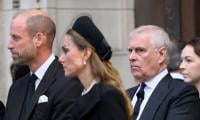WASHINGTON: The number of Americans filing new applications for jobless benefits declined last week as layoffs remained low, helping to allay fears that the labour market was deteriorating.
The weekly jobless claims report from the Labor Department on Thursday, the most timely data on the economy’s health, also showed unemployment rolls shrinking to levels last seen in mid-June. It reduces the urgency for the Federal Reserve to deliver a 50-basis points interest rate cut this month.
Economists shrugged off other data showing private employers hired the smallest number of workers in August. Most expect the US central bank to kick off its easing cycle with a quarter-point rate reduction as domestic demand remains solid. A step-down in hiring, which pushed the unemployment rate to near a three-year high of 4.3 per cent in July rattled investors and fanned concerns that a recession was stalking the economy.
“There are signs of a slowdown in hiring with fewer job openings, but until payroll jobs actually decline there is no recession,” said Christopher Rupkey, chief economist at FWDBONDS. “At the moment, it does not look like the Fed is behind the curve.”
Initial claims for state unemployment benefits dropped by 5,000 to a seasonally adjusted 227,000 for the week ended Aug. 31, the lowest level since early July. Economists polled by Reuters had forecast 230,000 claims for the latest week.
Claims had been bouncing around the 230,000 level since pulling back from an 11-month high in late July as seasonal distortions from the automobile industry and Hurricane Beryl faded. Unadjusted claims fell 3,352 to 189,389 last week, with a sizeable increase in Massachusetts more than offset by declines in Texas, New York and elsewhere.
“There was probably some residual seasonality boosting claims earlier in the summer, and that, like last year’s claims, could decline in late August and into September absent a more serious worsening in the labour market,” said Abiel Reinhart, an economist at JP Morgan.
The claims data echoed the findings in the Fed’s ‘Beige Book’ report on Wednesday, which described employment levels as “generally flat to up slightly in recent weeks”. It noted that “a few (Fed) districts reported that firms reduced shifts and hours, left advertised positions unfilled, or reduced headcounts through attrition, though accounts of layoffs remained rare.”
The number of people receiving benefits after an initial week of aid, a proxy for hiring, decreased 22,000 to a seasonally adjusted 1.838 million during the week ending Aug. 24, the lowest level since mid-June, the claims report showed.
Financial markets saw a roughly 41 per cent probability of a half-point rate cut at the Fed’s Sept 17-18 policy meeting, according to CME Group’s FedWatch Tool.
The chances of further rate reductions this year were boosted by another report from the Labor Department's Bureau of Labor Statistics showing unit labor costs rose at a much slower pace than initially estimated in the second quarter amid strong worker productivity.
Stocks on Wall Street were trading lower. The dollar fell against a basket of currencies. US Treasury prices rose.
EYES ON AUGUST PAYROLLS
The claims data has no bearing on the employment report for August, which is scheduled to be released on Friday, as it falls outside the survey period. Nonfarm payrolls likely increased by 160,000 jobs last month after rising by 114,000 in July, according to a Reuters survey of economists. The unemployment rate is forecast to slip to 4.2 per cent from 4.3 per cent in July.
Government data on Wednesday showed job openings dropped to a 3-1/2-year low in July. There is, however, a potential risk that payrolls could come in below expectations.
The ADP National Employment Report on Thursday showed private payrolls increased by 99,000 jobs in August, the smallest gain since January 2021, after rising by a downwardly revised 111,000 in July.
Economists had forecast private payrolls advancing by 145,000 positions after a previously reported gain of 122,000.
The ADP report, jointly developed with the Stanford Digital Economy Lab, however, has a spotty record as a guide to private payrolls in the Bureau of Labor Statistics’ (BLS) more comprehensive employment report.
Initial prints of the ADP employment report have mostly understated private payroll growth this year.
“While this report may lower the bar to what constitutes an upside surprise in tomorrow's employment situation report, there is no useful relationship between this payroll measure and the BLS measure,” said Conrad DeQuadros, senior economic advisor at Brean Capital.
A third report from the Institute for Supply Management showed services employment cooling in August, but still not consistent with an abrupt labour market slowdown.
Companies in the ISM survey reported “filling vacancies and replacing contractors across all disciplines” as well as implementing hiring freezes and “not backfilling positions as people are laid off, retire or leave our organization.”
The overall services sector continued to expand at a steady clip last month, with new orders rising. Services sector inflation was stable.
“The economy appears to be slowing, albeit at only a gradual pace,” said Michael Pearce, deputy chief US economist at Oxford Economics. “There are still no signs of a recession emerging.”















